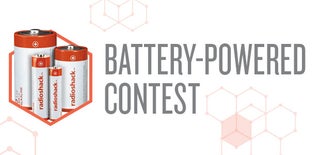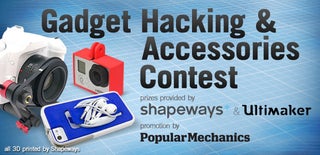Introduction: Water Powered Flashlight (v2)
Batteries are too mainstream, let's make Water Powered ones! This is my newer version of my previous flashlight project, this time we are using pennies (literally)! The flashlight works by using water as its electrolytes.
Getting Some Inspiration From My Vacation:
I spent a third of my summer hopping on the pristine islands of Palawan. We wake-up early everyday (4:30am). We rented a boat for the tour and one thing that I've noticed, the boatman used a flashlight to prepare the boat every morning, same for the fishermen who wakes-up early. I stared at the sea for quite some time and I remembered, these men can power their flashlights using the saltwater around them.
Is It Really Powered By Water?
Th internet currently has beer batteries, lemon batteries, potato batteries and water batteries. All of these batteries are powered by the same thing - the Redox reaction between copper and zinc or aluminum. The fluid (or potato) is just the electrolyte, and any solution with dissolved ions - which is basically any solution in water at all - will serve as an electrolyte. Some chemists will react bad to this title, some aren't bothered at all. Let's just call it the galvanic battery from now on.
_______________________________
The project is under documentation, probably done by tomorrow. I rushed it for the Green Design contest.
Step 1: Parts & Materials
Common Household Parts:
- A Sheet Of Aluminum Foil
- Wet Wipes (Tissue Paper)
- 10 American Pennies
- Hook-up Wire
_________________________________
Electronic Parts (for Joule Thief):
- 2N3904 General Purpose NPN Transistor
- Toroidal Core (from old CFL bulbs)
- 1k Ohm Resistor (¼W)
- Four 5mm White LEDs
_________________________________
Tools & Equipment:
- Leatherman Multitool
- 30W Soldering Iron
- Digital Multmeter
- Hot Glue Gun
Step 2: Cut Round Traces of Aluminum Foil
For homemade batteries, aluminum and zinc works as a good cathode. On my last project (the v1), we used a zinc strip, it was a bad idea to use it since not all hobbyists has them. Aluminum is the best alternative, every one has them at home, problem solved! :)
Step 3: Cut a Bath of Wet Wipes (Tissue Paper)
Ok, first it's time do decide whether I should use regular tissue paper or wet-wipes. What's the difference? Well tissue paper tears easily and becomes mushy when it gets wet. Wet-wipes on the other hand is made to withstand tearing, it's almost like a cloth. I say choose wet-wipes!
Done deciding? Find a sharp pair of shears, the Leatherman's scissor is sharp enough, then cut multiple traces of wet-wipes. Use the coin as your guideline.
Step 4: Stack Two Plies of Tissue Paper
Please follow the pattern correctly, otherwise the project would not work. I stacked two plies of wet-wipes on top of my penny. Why two? It will hold more water.
Step 5: Next, Stack a Sheet of Foil
Now, stack the aluminum foil on top of the tissue paper.
Step 6: Repeat Until You 10 Cells
Repeat this process until you have created 10 of these cells.
Step 7: Glue the Cells Together
I glued my 10 cell galvanic battery to prevent the cells from separation.
Step 8: Test It
My readings showed the my 10 cell penny battery produces 5.1 volts. That's a lot of power, coming from a galvanic battery.
Step 9: Drill the Recycled Enclosure
The electrolyte needs an entrance and exit. Too much fluid inside would lead a short.
Step 10: Make Plastic Dividers
Like all batteries, your penny battery needs dividers. Luckily my recycled enclosure has ridges, those ridges can hold small credit card cut-outs. I used my expired timezone card :)
Step 11: Time to Get Salty!
Galvanic batteries love salt! Salt increases the voltage output. Sprinkle salt over the pennies then set aside the excess.
Step 12: Add a Switch
I used a push button toggle switch. Kindly glue it in series with your penny battery.
Step 13: Install the LEDs
Cut a fraction of perfboard then solder four LEDs in parallel.
Step 14: Build a Joule Thief Inverter
It's up to you to build a joule thief. The Penny battery has enough voltage to run the LEDs. Adding a joule thief keeps the voltage uniform even when the penny battery needs replenishment.
_________________________________
Step 15: Waterproof the Electronics
The easiest way of waterproofing the electronics is by applying a thick blob of hot glue around it.
Step 16: Put the Cover Back On
Put the cover back on and you are ready to go!
Thank you for your time! :D

Participated in the
Battery Powered Contest

Participated in the
Gadget Hacking and Accessories Contest

Participated in the
Green Electronics Challenge

Participated in the
Green Design Contest













